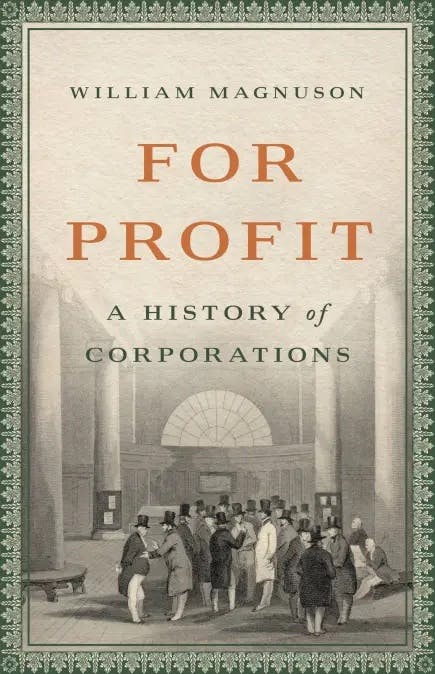Between 1927 and 1931, the number of suicides in Detroit rose fivefold. The cause was unmistakable: The stock market crash of 1929 had hit the auto industry hard, stimulating widespread unemployment in Motor City. In 1932 the Detroit Times estimated that, accounting for dependents, nearly 700,000 people were directly affected by unemployment—almost half the population of the city. Suicide often came on the heels of starvation.
Of the city’s unemployed, over one-third were known as “Ford cases,” meaning they’d been laid off by the Ford Motor Company. “The average man won’t really do a day’s work unless he is caught and cannot get out of it,” the company’s founder, Henry Ford, told an Ohio newspaper in 1931, as the Great Depression deepened. “There is plenty of work to do if people would do it.” His words contradicted reality: Here were tens of thousands of his own former employees totally immiserated, as “caught” as could be and desperate for work, but there were no jobs for them.

In March 1932, they put Ford’s words to the test. Between 3,000 and 5,000 people assembled to march to Ford’s River Rouge plant, where they intended to demand the reinstatement of all laid-off workers. As they proceeded on foot to the factory, the Detroit police responded with tear gas. Some marchers hurled rocks. The city police, joined by Ford’s private security forces, opened fire. Harry Bennett, head of the Ford Motor Company Service Department, personally shot his revolver into the crowd from the back of a car before being knocked unconscious. By day’s end, four marchers were dead, with a fifth fated to succumb to his injuries. No officers were killed. At the slain marchers’ funeral, their coffins were displayed together beneath a banner that read “Ford Gave Bullets for Bread.”
Our economy revolves around private profit-seeking enterprises. In the United States most goods and services are provided by corporations, and most people get the money to afford them from corporate employers. Corporations’ pervasiveness makes it seem natural and inevitable that we delegate the task of organizing society to meet people’s basic needs to them—rather than to non-profit-seeking entities, such as government departments or cooperative firms.
In truth the arrangement is specific to our time and place, and is hardly inevitable. It also has a fatal flaw, which is that corporations constantly renounce their responsibility to fulfill human needs when their profits are on the line. In moments of economic stress or upheaval, as the “Ford cases” discovered, what was supposedly a cooperative arrangement is revealed as a competitive one: Either people will survive or the corporation will.
The bloody episode that came to be known as the Ford Hunger March receives a passing mention in William Magnuson’s new book, For Profit: A History of Corporations. A Wall Street lawyer turned law professor, Magnuson argues that corporations have historically been a force for good in society, and can be again. He’s ambivalent about Ford’s overall legacy and is rightly critical of Ford’s lifelong opposition to labor unions. But Magnuson admires Ford’s attitude on the need to harmonize the corporate pursuit of profit with the common good, exemplified by Ford’s statement that “if people would go into business with the idea that they are going to serve the public and their employees as well as themselves, they would be assured of success from the start.”
Magnuson’s argument is a difficult one to make at a moment when popular faith in corporations is flagging. In 1985, 24 percent of Americans said they had
little to no confidence in big corporations. Today, that figure stands at 41 percent, as corporations make little effort to hide their exploitation of workers, disregard of democratic principles, and careless destruction of the natural world. Magnuson acknowledges these and other abuses of corporate power, but he views the behavior of the contemporary corporation as a departure from the original corporate mission. We can rightly criticize the modern corporation, in other words, but we shouldn’t throw the baby out with the bathwater.
“We have lost sight of the true spirit of corporate enterprise,” Magnuson writes. “We have elevated profit-seeking from a means to an end to an end in itself.” This is the author’s contention in a nutshell: Corporations have always been motivated by profit, but where that pursuit once improved society it now threatens to destroy it. To solve our most urgent problems, we must restore corporate conscientiousness, the sense of obligation to meet social needs via profit-making that once characterized private enterprise.
For Profit traces the evolution of the corporation from ancient Rome to the present day, devoting each chapter to an individual firm that best illustrates one aspect of that complex history. The chapters are entertaining and richly detailed historical accounts, and they also serve as allegories for Magnuson’s story about corporations’ abandonment of their founding purpose. Take the book’s narration of the rise and fall of the British East India Company, which was founded in 1600 to help England take advantage of the spice trade in the East Indies. “At the time, corporations could only be created by petitioning the crown,” Magnuson observes. “It was not a right to form a corporation; it was a privilege.” In exchange for the privilege, chartered corporations were expected to integrate their pursuit of profit with their assumed responsibility to advance the nation’s interests. The British East India Company was created to “contribute to the greatness of England” and even brandished the English flag on its corporate seal.
The company’s original purpose was to increase the overall wealth of the nation by establishing an English trade presence across the globe. To that end, the enrichment of individual investors was a mere inducement, and an effective one at that. But as the company grew, in Magnuson’s telling, it abandoned its original civic mission and “began to treat the British government more like a trading partner, to be bought off, ignored, or actively undercut, than like a sovereign.” At home, it engaged in insider trading, stock manipulation, bribery, and other abuses of economic power. Abroad the corporation’s profit-motivated crimes ranged from slave trading to grain hoarding, the latter of which resulted in a famine that killed somewhere between two and 10 million Bengalis.
In Magnuson’s view, the British East India Company, like corporations in general, started off with the proper balance of profit seeking and public-spiritedness and eventually lost its way. But leaving aside the question of whether enriching one particular nation is really a “common good” aspiration to begin with, there’s also no indication that the corporation’s early activities redounded to the benefit of the average English person. The seventeenth century was a time of violent dispossession in England, as empowered landlords confiscated and privatized common lands, entrenching capitalism on the island, from whence it spread across the globe. The wealth the British East India Company brought to England largely circulated within and fortified the emergent domestic capitalist class—the same class that transformed self-sustaining peasant farmers into landless vagabonds and exploited industrial workers at home, and subjected vast numbers of people to displacement, famine, slavery, and genocide abroad.
The British East India Company’s original charter may have gestured at a nobler purpose, but it never really had one. Indeed regardless of their rhetoric, there is little in history to support any suggestion that corporations were once less inclined to cruelty in practice. Corporations have always sacrificed people at the altar of profit when advantageous, from the 1781 Zong massacre in the Atlantic Ocean to the 1928 banana massacre in Colombia to the 2013 garment factory collapse in Bangladesh; from profiting off the grueling labor of paupers and children in Victorian English workhouses to leasing convicts as an effective continuation of slavery after the American Civil War; from Shell and Exxon hiding evidence of climate change to Purdue Pharma flooding the U.S. with addictive opiates, to Coca-Cola partners hiring far-right militias to murder union activists.
It’s hard to find the baby in bathwater that deep. If anything, corporations have had centuries to prove they can bear the primary responsibility for providing what people need without at the same time engaging in graft, malfeasance, exploitation, or outright acts of terror. They haven’t been able to pull it off.
Magnuson ends For Profit with a list of ground rules for civic-minded corporations: Don’t undermine democracy, don’t deceive shareholders, do take care of workers and the planet, resist the urge to establish monopolies, reject high-risk short-termism to avoid endangering the economy, and so on. He wavers in his faith that corporations will abide by these guidelines on their own, stating plainly that if corporations can’t play nice then governments are well within their rights to compel them to—a welcome perspective in an era of wanton deregulation.
Where Magnuson errs is that corporations are not just disinclined to follow these rules but are structurally incentivized to break them. Profit-making is the corporation’s obligation, and the primary methods of fulfilling it all have anti-social effects: suppressing labor costs and undermining attempts at worker organization, lobbying to decrease taxes and environmental regulations, finding new market niches in the form of privatization, generating and exploiting psychological insecurities via advertising, opportunistically hiking prices in emergency situations, subverting democracy when it threatens to produce reform administrations that will obstruct any of these efforts, and so on. Any attempt at society-wide corporate reform will run up against the fact that markets compel corporations to behave in ways that are harmful to society. High-minded executives can try to fight it, but they’re fighting a losing battle.
There have indeed been moments in the history of capitalism when the corporate agenda has intersected with the social agenda, such as in the relatively broad institution of family-sustaining wages in mid-twentieth-century America, when a strong post–World War II economy organized along Fordist lines intersected with a strong union movement. But ultimately the project of ensuring human well-being and the project of profit maximization are distinct, even when they overlap. And when they inevitably diverge, any prudently managed corporation will choose itself. It has no choice: It must continue to generate profit at increasing speed and volume or risk succumbing to its competition and ceasing to exist. Henry Ford knew it, or else he would have given the marchers their jobs back in the spirit of public service.
Private enterprises often accomplish impressive feats in the process of maximizing profits, but at no time in history have they worked their miracles without also exploiting workers, undermining democracy, and ransacking the natural world. What we need now are other organizational forms—forms that might accomplish impressive and socially advantageous feats because they’re tasked with doing so, and not as an anticipated by-product of the pursuit of profit.
We already have institutions, from government departments to worker-owned cooperatives, that do not exist to generate profit and do not automatically encourage socially damaging activity. We should devote our efforts to expanding their role, while shrinking the role of profit-seeking corporations. Capitalist innovation has given us smartphones and supermarkets, but it has yet to yield an economy that exists to support human flourishing rather than to gobble up human labor and purchasing power no matter the social cost. A world where the hungry receive bread, not bullets—that’s the kind of innovation we need.
This piece was supported by the Economic Hardship Reporting Project.






